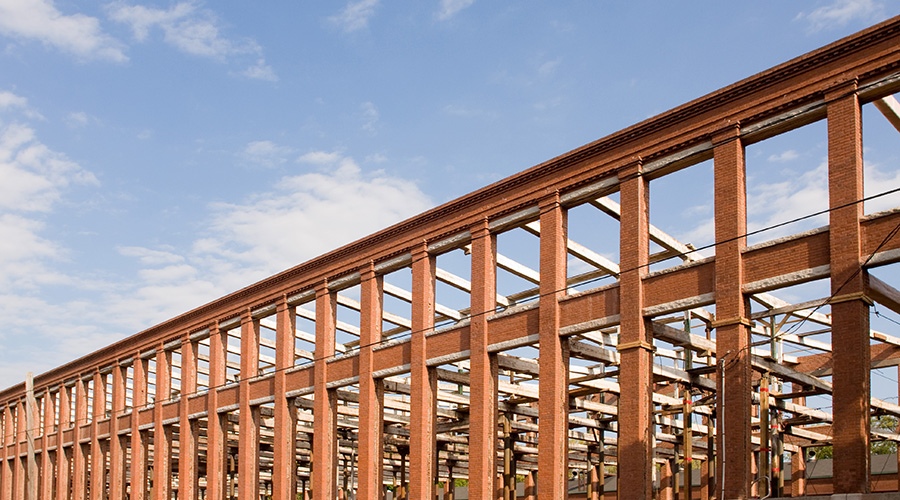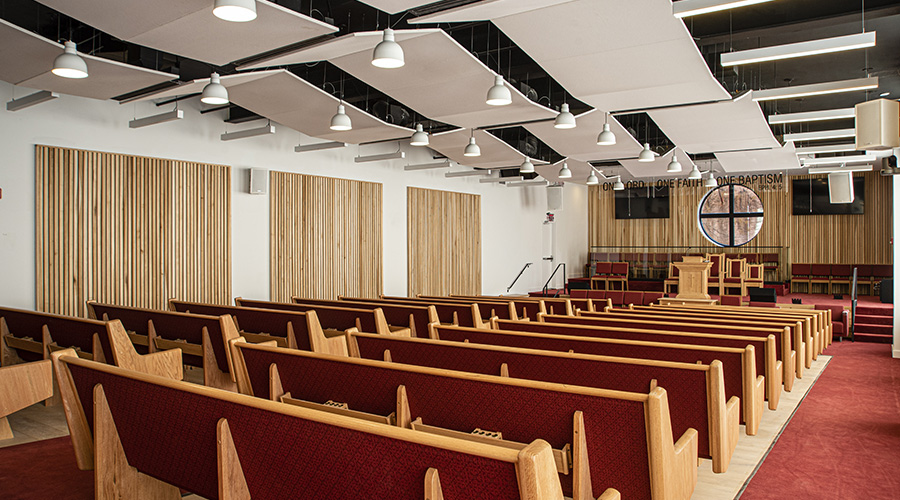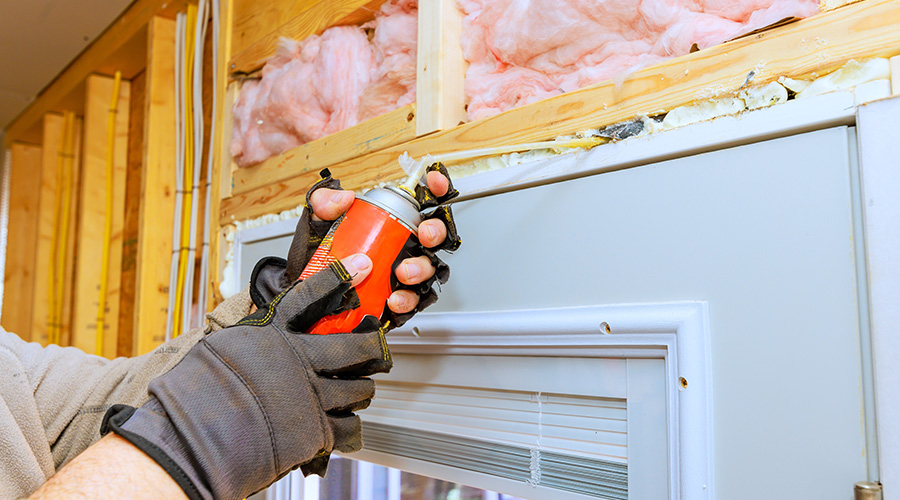Going Tankless, Finding Savings
Maintenance and engineering managers seeking to curtail energy and water use in their facilities are exploring a range of products and technologies. In this effort, tankless water heaters are garnering an increasing amount of attention.
A closer look at tankless technology can help managers quantify its benefits. It also can help managers understand the maintenance and engineering considerations in installing, monitoring and maintaining tankless systems, as well as other available technologies.
A New Alternative
Storage-tank water heaters have served institutional and commercial facilities very well for years. But it is now apparent that this technology can waste more than 50 percent of the potential energy in natural gas and might not make sense, considering today’s rising energy costs.
Water-heating systems are typically second only to HVAC systems when it comes to the amount of energy consumed. As a result, even small gains in efficiency can lead to big reductions in energy expenses. To meet an increasing market need, manufacturers now offer a range of new systems, including tankless, high-efficiency condensing tanks, and high-efficiency condensing instantaneous heaters.
The industry standard in this country is the gas water heater that stores water in a tank with a typical capacity of 50-90 gallons. A moderate amount of heat slowly transfers to the water from a gas burner at the tank’s bottom and from the hot flue gases flowing through the tank’s center. The system uses energy when occupants demand hot water, as well as in maintaining the water temperature 24 hours a day, seven days a week.
A tankless heater uses a heating element that can quickly apply high amounts of heat to water flowing through the heater. Unlike a tank heater, it does not use energy to continually heat 50-90 gallons of water. A tankless heater can pay for itself in three-seven years. What’s more, the system does not have a tank to take up space, add weight and potentially leak.
A shower offers a good comparison of the two systems. Most shower heads operate at a flow rate of 2.5 gallons per minute (gpm). A typical shower valve mixes 80 percent hot water with 20 percent cold water. As a result, the water heater produces 2 gpm of hot water.
During the shower, the tank water heater is losing hot water and receiving cold water. An old industry rule of thumb is that 80 percent of usable hot water is available in a tank before the water temperature drops below a comfortable temperature for a shower. In this example, a 50-gallon water heater has about 40 gallons of hot water, which lasts about 20 minutes for one shower. A typical shower is about 10 minutes long, so a building with a 50-gallon water heater will supply water for two showers.
In contrast, a tankless heater provides unlimited hot water for the shower because it can provide 2 gpm of hot water for as long as water flows through the heater. But it can start to have problems, for example, on a cold winter day with the demand of two showers at the same time while a dishwasher is running.
In this case, the water heater is raising 6 gpm of water from 40 degrees to 120 degrees, which means a typical single tankless heater cannot supply enough hot water.
Benefits Breakdown
Tankless heaters offer a number of advantages when compared to a tank heater. Tankless units last longer, take up less floor space, pollute less because of low nitrogen oxide discharge, use less gas, have no tank to dispose of, and offer tighter temperature control — generally, of plus or minus 2 degrees.
They also have no time limit on the hot-water supply at low flows, present no safety issues because of a leaking tank, and avoid problems related to the growth of bacteria such as Legionella in stored hot water. Organizations that install them also might be eligible for tax credits.
Managers should keep a number of important points in mind when installing tankless systems:
-
Gas-line sizing. Gas flow is increased compared to tank-type heaters and requires larger gas piping.
-
Venting. Most manufacturers provide venting kits consisting of a PVC outer pipe with a stainless-steel inner pipe. Gas-fired equipment requires an inlet supply of fresh air for combustion, as well as an exhaust vent for combustion products.
-
Location. The heaters can be installed on outside walls with venting through the wall, or they can be installed outside with a special insulated shell.
Engineering Considerations
One key factor for managers to remember in selecting tankless heaters is to keep the installation simple. Some commercial applications can lead to complex designs that might not deliver the desired benefits.
For example, when hot-water fixtures are located long distances from the heater, recirculation pumps can circulate the water from the longest run of pipe back to the heater. As a result, a supply of hot water is available at all times to all fixtures. But the constant circulation of water in these heaters can shorten the unit’s warranty from 10 years to three years.
To address this issue, managers can specify a small 1.5 kilowatt per hour, 6-gallon storage heater to be installed in the recirculation loop to maintain water temperature. While this solves the problem, it also reduces energy savings. Another remedy is to install more than one heater.
In areas with hard water, lime deposits can accumulate at the heating element, reducing its efficiency during low-flow conditions. To address this issue, manufacturers recommend cleaning the fixture every few years or installing water softeners. Some models have sensors that notify operators when the unit needs cleaning.
It also is essential that managers and operators keep the water flow rate in mind. Inlet cold-water temperature can be as low as 40 degrees in some winter conditions. The amount of energy the heater uses is directly related to the temperature difference between water entering the heater and water exiting the heater.
Tankless heaters are limited by the amount of energy they can use to heat water. Most heaters provide 8 gpm at 120 degrees, but if higher temperatures are needed, the amount of available hot water drops. It is important to know the required temperature and flow of the hot water and find a heater that can meet these demands.
When the demand exceeds 6-8 gpm, tankless manufacturers recommend installing more than one heater in parallel, and some applications recommend storage tanks. It is important to follow manufacturer-recommended installations for each application. These systems can result in complex designs that complicate installation, operation and maintenance.
Keep in mind that installing tanks with tankless water heaters can decrease the tankless heaters’ energy savings when compared to tank-type heaters. For example, two tankless heaters installed in a plumbing that also has a hot water storage tank will require a contractor to install two heaters, one tank, nine valves, three relief valves, a check valve, a circulation pump and eight pipe connections.
Combining systems could void warranties and lead to complex maintenance issues. If something goes wrong in the system, does the manager call the installation contractor, the tankless water heater manufacturer, the pump manufacturer or an engineer? In the end, the installation saves little or no space. Some manufacturers suggest that managers use approved contractors to help eliminate some of these issues.
One size does not fit all when it comes to systems for water heaters. As a result, it is important to consider the demand for hot water and the flow required for a particular facility.
When managers gather this data and understand the performance benefits and challenges related to tankless water heaters, they will be better able to specify the most appropriate type of system for the application.
Winston Huff, CPD, LEED AP — whuff@ssr-inc.com — with Smith Seckman Reid Inc. has 25 years of experience as a project manager, plumbing designer and sustainability coordinator. Smith Seckman Reid — www.ssr-inc.com — is a full-service engineering design and facility consulting firm.
Going tankless, finding savings
Related Topics:











